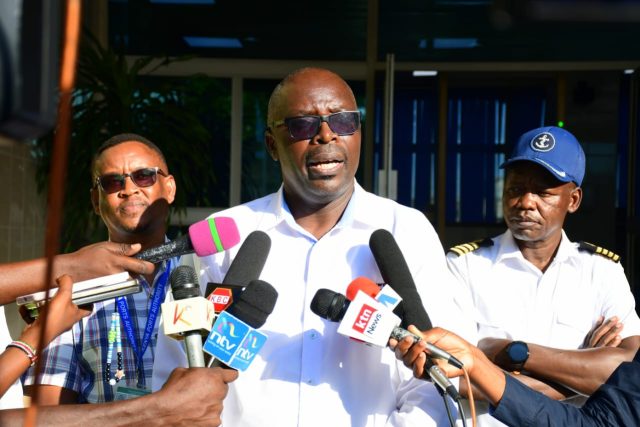
The Kenya Ports Authority (KPA) projects handling 2.2 million twenty-foot equivalent units (TEUs) by the end of 2024, marking a 20% increase compared to last year’s performance.
KPA Managing Director Captain William Ruto revealed that the port has already surpassed last year’s target of 1.6 million TEUs, with current volumes reaching 1.75 million TEUs.
He attributed the growth to improved operational efficiency and streamlined processes at the facility.
Ruto noted that KPA’s cargo volumes over the past two years have outpaced projections, with current port capacity standing at 2.1 million TEUs.
He revealed that KPA is working to boost the Port’s Capacity by expanding Container Terminal 1 also known as Berth Number 19B adding that they will soon sign the contract with the contractor to add 240 meters of key length, an additional capacity of 300,000 TEUs.
“Before I took over as the CEO, the port was doing 1.4 million twenty-foot equivalent units (TEUs), and at the end of my first year, at the end of 2023, we did 1.6 million TEUs, a growth of 12 percent from the previous 0.4 percent,” Ruto said.
He noted that KPA now serves over eight transit countries, with the transit market growing by more than 35%.
Additionally, the port is implementing major upgrades, including modernizing the Terminal Operating System and acquiring advanced equipment to boost operational efficiency.
Ruto emphasized his commitment to reducing costs and promoting environmental sustainability through strategic investments, such as the new oil terminal.
He said the move has significantly reduced ship waiting times and addressed the long-standing issue of high demurrage costs, which have previously driven up fuel prices.
In a move towards greener logistics, petroleum products are now being transported via ships to Kisumu, removing approximately 158 trucks from the road per journey in a bid to cut carbon emissions and improve road safety by reducing heavy truck traffic.
“KPA’s investment in the oil terminal underscores its commitment to modernization, economic growth, and environmental sustainability. As the project progresses, it is set to reinforce Kenya’s leadership in innovative port management across Africa,” Ruto said.
Agayo Ogambi, CEO of the Shippers Council of East Africa and Chairman of the Port Charter, praised the port’s performance and the role of the port charter in monitoring its efficiency.
He noted that cargo dwell time in Nairobi has reduced from 4.5 days to 3.5 days, while Mombasa’s dwell time stands at over 79 hours, a positive indicator of port efficiency.
Ogambi highlighted an ongoing media tour of the port, which will extend to ICD Nairobi, Naivasha, Kisumu, and Malaba.
“The goal is to assess whether we are meeting our targets and identify interventions to enhance competitiveness, as transport and logistics costs impact regional competitiveness,” Ogambi said.
He also noted a 17% increase in cargo traffic through the port between 2022 and 2024, with a 14% increase in traffic to Burundi.
However, Ogambi called on the government to bolster system redundancy and business continuity plans, stressing that stability is critical for timely cargo clearance.



















